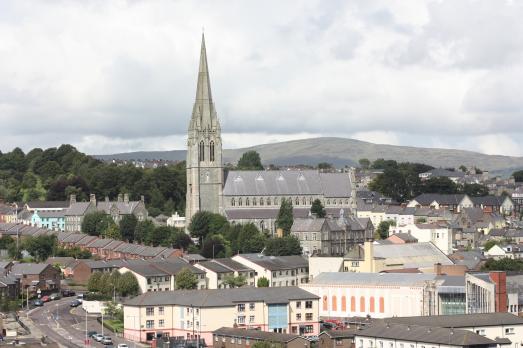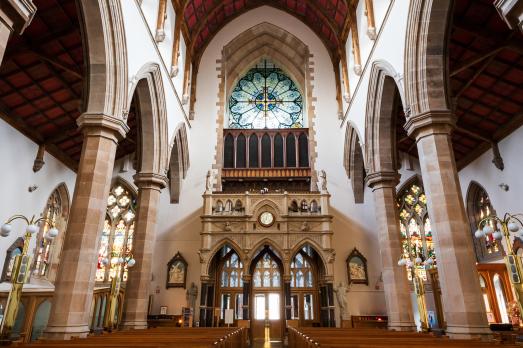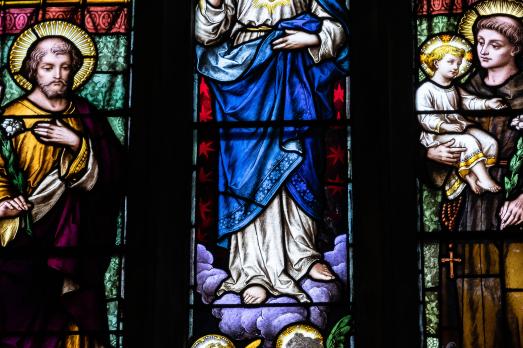In 1838, during a historic meeting at Long Tower School, community leaders, and faithful congregants gathered to that the ‘building of a cathedral was a praiseworthy object.’ However, due to the decade of famine that followed, the project was delayed until the 1850s. The cathedral stands on a plot of land formed by the intersection of Francis Street, Creggan Street, and Infirmary Road which is believed to have been near the original site of a former Dominican Friary.
It was designed in the Gothic Revival style by the architect James Joseph McCarthy, who had also been appointed to complete Augustus WN Pugin’s unfinished works after he died in 1852. The spire was a later addition. The plan of the cathedral is a simple neo Gothic expression. St Eugene's was solemnly opened on the 4th May 1873 and cost a little over £40,000 to build.
The best way to enter is by the great western door. The porch is now home to eight Austrian oak statutes that were originally part of the wooden pulpit (erected 1906). Look above you as you enter the main body of the Cathedral and you will see the organ gallery, which was extended in 1904. The slender columns are crowned by a ring of oak leaves with a dove nestling among them. These are symbols of Saint Columba, Patron Saint of Derry.
Behind the magnificent Telford & Telford organ stands a beautiful stained glass rose window (installed 1920). At the rear of the north aisle is another large stained glass window, this time depicting Saint Columba blessing Derry as he embarked on his journey to Iona. The white Carrara marble font is notable for its spacious dimensions.
The reredos is made of Caen stone and Irish marble and is sculptured in huge relief depicting the 24 Elders with crowns upon their heads, holding harps and adoring the figure of the Lamb. The two groups stand under arched and recessed canopies. The Blessed Sacrament is reserved in a silverplated bronze tabernacle which was installed in 1989. The symbols on the door depict the Lamb of God as well as sheaves of wheat and bunches of grapes. Figures of the Twelve Apostles adorn the sides.
The interior is adorned with magnificent stained glass windows, crafted by the renowned Mayer of Munich, bathing the cathedral's aisles, side chapels, and chancel in a kaleidoscope of vibrant hues, casting patterns of light and shadow. The Bishop Kelly Memorial Window, perhaps the most arresting feature of the Cathedral, is the majestic stained glass window above the sanctuary. It dates from 1891 and beautifully illustrates seven significant scenes from the life of Christ.







